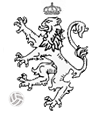
Document | arfsh.com
A document created by arfsh.com for the whole football community
English football after World War I.
Author: Isaque Argolo | Creation Date: 2022-01-19 01:20:13
Data providers: Isaque Argolo.
Archive(s): .
Before mentioning the war itself, there were already changes to be made on British soil, more precisely in England. Compared to what football was like in the Victorian era, teaching and training methods were changing more and more. At the beginning of the 20th century, things changed: the rational, cerebral, imaginative game was already losing ground to a more physical game. Furthermore, due to an increase in physical training, the technique was gradually being mitigated, too. For many, football was no longer an artistic, intelligent game, but a fight in which 22 players ran desperately aiming only for one thing: the goal. There's nothing wrong with physical training, of course. Currently, for example, Bayern München is a club that knows very well how to share the attributes of football, even though they clearly have an emphasis on the athletic and physical training of their players. In old English football, however, the methods were not the same. There were players who mentioned that ball training almost never happened, but long runs and physical training were paramount. With that, the tactical and technical ability of the players was decreasing, therefore the myriad of art was mitigating over the years. This, due to the low quality of the game, gave a lot of space for kick and rush, which was a faster way to get to the attack, however, in the eyes of the vast majority of people, it was an ugly, unpleasant method that did not reflect what was football.Even with football not so flashy and without the same technical quality of the Victorian era, still, aces of the highest class in football history were developed. Even so, the drop in quality between before and after the first war, of course, was notorious. Due to the damage caused, England was no longer the main British force, but Scotland sovereignly took their place. Of all the Home Championship tournaments in the 1920s, England won none and, in an overall England-Scotland match count, they lagged far behind. There were many spaces on the field, the players no longer had the same class, several generations were lost, the conditions were not the same, the type of training further aggravated the low tactics and technique. Unlike the use of past greats like Bloomer, who was a master of dribbling and shooting, many clubs used old sprinters to coach football players. The European Continent, on the other hand, wanting to leverage the quality of local football, brought British names like Bloomer and Burgess, for example, in addition to names that shaped local football, such as John William Madden, John Dick, Jackie Robertson, Jimmy Hogan — who considered himself an average to good player — and several others. The English class, yes, fell to a point where many doubted that they could face the new forces of Central Europe, especially with Czechoslovakia that had A.C. Sparta as their main power. The disputes between clubs from the former Austro-Hungarian empire and English teams were increasingly being equal, to a certain point where some of England's top teams sometimes lost to teams like Ferencváros, for example. Moreover, not only was this noticed almost unanimously in the British Isles, but the entire continent saw the English decline in the 1920s until they rose in the 1930s.
© arfsh.com & Isaque Argolo 2025. All Rights Reserved.